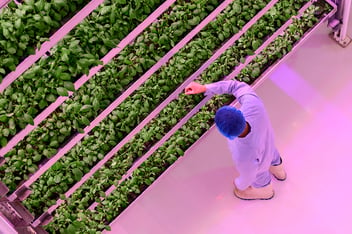We need to change the narrative to drive up inclusivity in tech
It was no surprise to me at all when the Nash Squared Digital Leadership Report found that only 12% of tech leaders are female, and that women only make up around a quarter of the tech workforce. It reflects what I am seeing myself, unfortunately. Women are highly under-represented in tech. I am CEO of a digital solutions business in Belgium called Flow Pilots. I would love to hire more women. But there’s a real shortage of young women coming through with coding or programming skills – you can’t hire what isn’t there.
Bias in the classroom
The problem starts right at the beginning, in how society moulds the narrative. There is bias and gender stereotyping mixed in from the start. We teach children from their early years what the prototype of a doctor or an engineer is, through the way we talk about subjects and the images we present. School books still have very traditional presentations of gender roles – I know, because I have researched this myself. It’s also something that the World Trade Organisation has complained about.
The fact is that by the age of six (when children begin to become properly aware of their gender), girls already think that boys are better at technical and mathematical concepts. We need to completely change the approach. Computational thinking – in the form of making or building simple things – should start from the age of around two and a half when girls and boys start at kindergarten. All gender-biased toys should be banned from kindergartens (there are plenty of those at home after all). The early years should be focused on creativity, making things, painting things, constructing things – just letting children experiment and explore. Then from around the age of six, simple coding techniques could be introduced at the same time as children of both genders are introduced to a wide range of careers and activities – factory floors, healthcare settings, office roles, technical and digital jobs – to give them the broadest possible, and unbiased, view of the possibilities in front of them.
But sadly, our present system is what I describe as ‘inculcation’ not education. Attitudes and stereotypes are inculcated into our young people. This bias is then progressively emphasised as children grow up in the way everything is framed. We need to change this – and I am practising what I preach! I am sending my own two young children to a special school in Belgium for just this reason. I don’t want them to have their outlook narrowed and hampered by traditional stereotypical approaches.
STEM – too late and too narrow
Another problem is that in Belgium, and many other countries, the whole notion of STEM comes in much too late. It’s not introduced in Belgium until around the age of 14. By then, the expectation has already been set that STEM is something for boys. Girls are looked upon as weird or odd if they’re interested and face exclusion from their peer groups if they become serious about it.
A related issue here is that the whole concept of what STEM is needs to be revisited. At the moment, it’s really viewed through a male lens, a man’s narrative. There are many technical skills that women are really strong in that aren’t viewed as STEM - for example, take the NASA moon landings. Did you know that a team of 30 women worked to design the technical specifications for the space suits and sewed them with 21 layers of fabric to ensure they were resistant to radioactivity while also allowing sufficient movement for the astronauts? The women worked closely with engineers so that the necessary tubing and ventilation could be integrated into the design. And yet this highly complex technical achievement is hardly ever mentioned in the history of NASA.
It’s something that’s literally been going on since the Stone Ages. Technical advancements then are talked about in terms of the spear and arrow tips that men invented. But what about the women who developed pottery skills so that food could be cooked and also stored and preserved? It’s great that diversity and inclusion is much more on the agenda now and I hope that we will see increasing levels of change. But until we transform the underlying narrative right from the start, I’m not so hopeful about how far reaching that change will be.
Tactics for change
There are things that help. I regularly speak at schools and colleges to inspire young girls. I also run a network for women that meets every other month. The aim is to show young women coming into tech that there are role models who can inspire them – other women who have made it to the top. This helps diminish the fall-out. Because another vicious circle is that those women who do come into tech often get to the age of 30-35 and are disappointed by the lack of women around them and drift out of the profession towards something else. This is also the age where many women begin to start a family, and often they just don’t come back.
I encourage women in the workforce to expand and develop their skills. There aren’t many women coming through with programming skills, but there are more in support roles. So I push them to take courses, develop their professional knowledge and talk the talk. Women have brilliant skills and capabilities that really suit them to careers in tech – creativity, communication, collaboration. They tend to really think about the needs of users and what the key requirements are in a new piece of software or app. Men might say, “Let’s build this because we can.” Women are more likely to say, “If we build this, what problem will it solve?”
It’s a continual battle though. A partner at a Big Four accountancy firm recently told me that women are better at looking after children because we are “biologically predefined” to do it. That may or may not be the case. But that doesn’t mean women can’t do a whole range of other things as well and it’s something I am never going to stop fighting for!
Biggest challenge, biggest opportunity
My biggest challenge and opportunity for the technology sector are both also, in a sense, related to gender and bias. The biggest challenge we face is ethics in the development and use of AI. It worries me how little regulation there is and how little awareness there is of the dangers of building bias into tech. Look at how dictators like Putin use technology to programme the way people think and what they believe. But at the same time, if we can get this right there is a huge opportunity. Inclusive tech could help make healthcare more proactive, accessible and affordable. It could help address aspects of climate change. It could make lives in developing countries much better, for example by predicting where and when rain will fall in regions struck by drought. It is all about aligning tech with common, agreed norms and values rather than making it all about money or power. There are too many megalomaniac projects in the tech landscape today that have nothing to do with serving the best interests of society. Let’s change that.
This article was originally published in The State of Digital 2022 and is part of the Digital Leadership Report series. Other articles in the publication discuss a CIO's remit, cyber security, ESG, and talent attraction in IT.
Crimson is an IT consultancy, an IT solutions provider, an IT recruitment agency, and a Microsoft Gold Partner with offices in Birmingham and the City of London.


